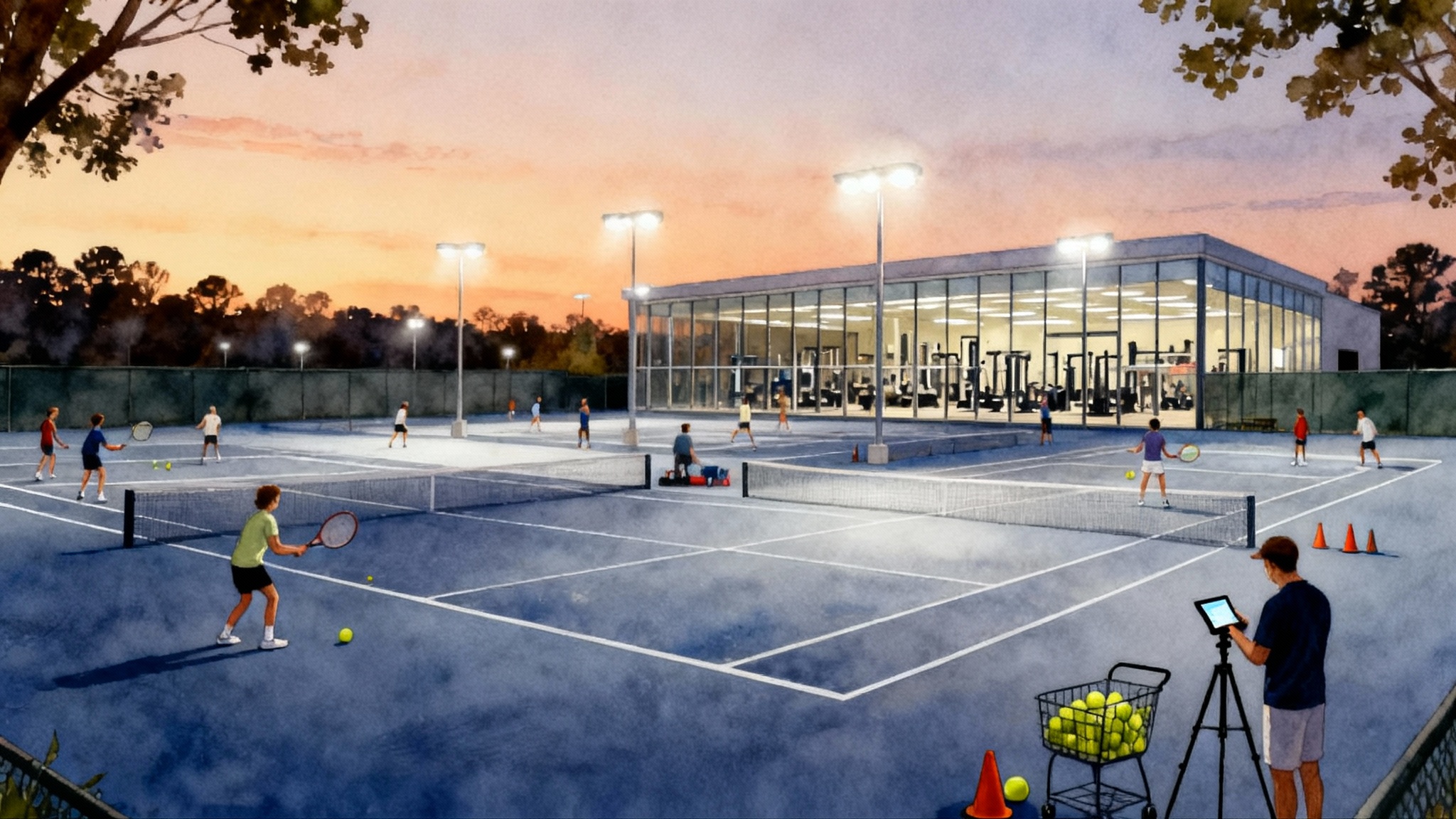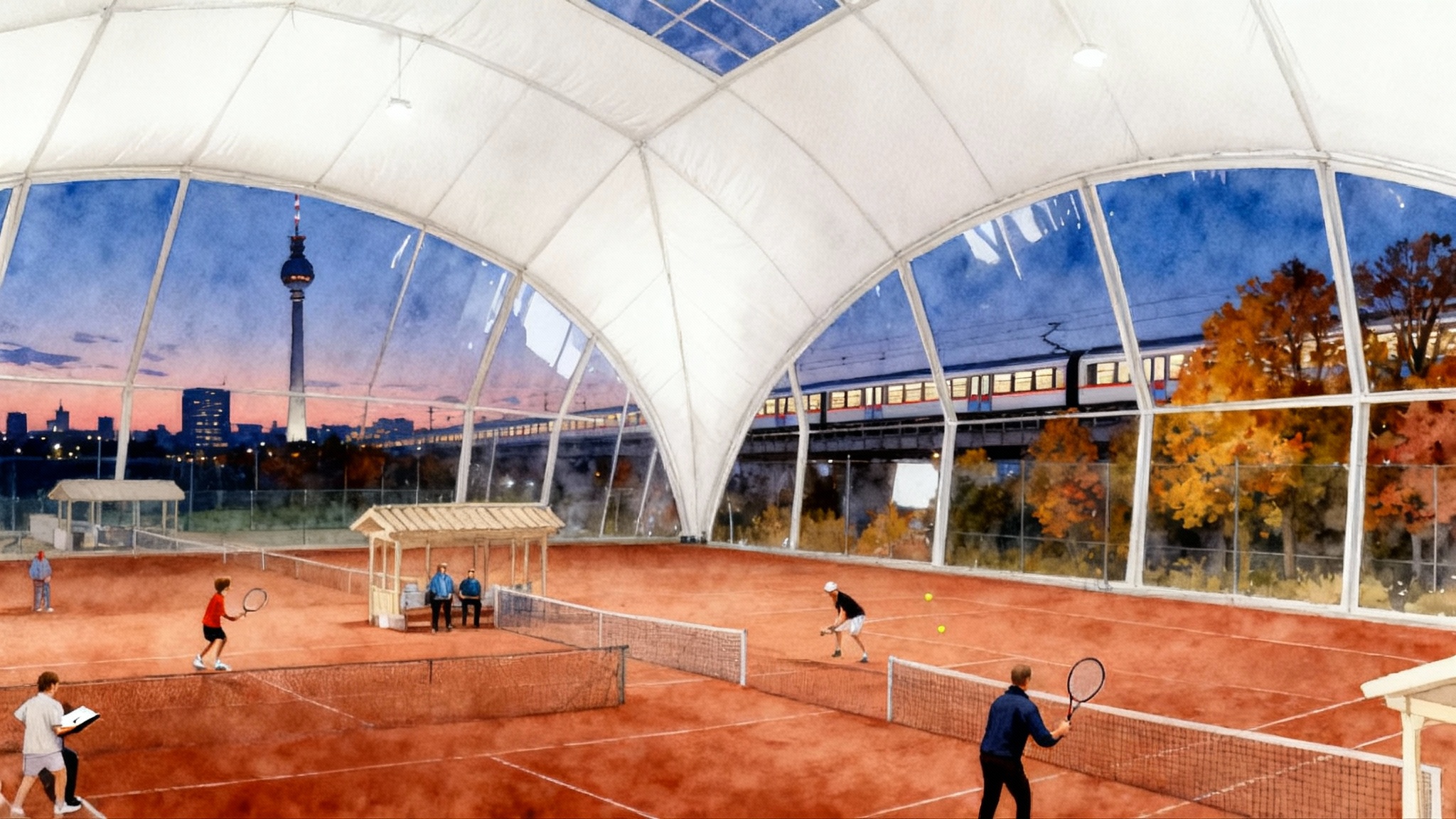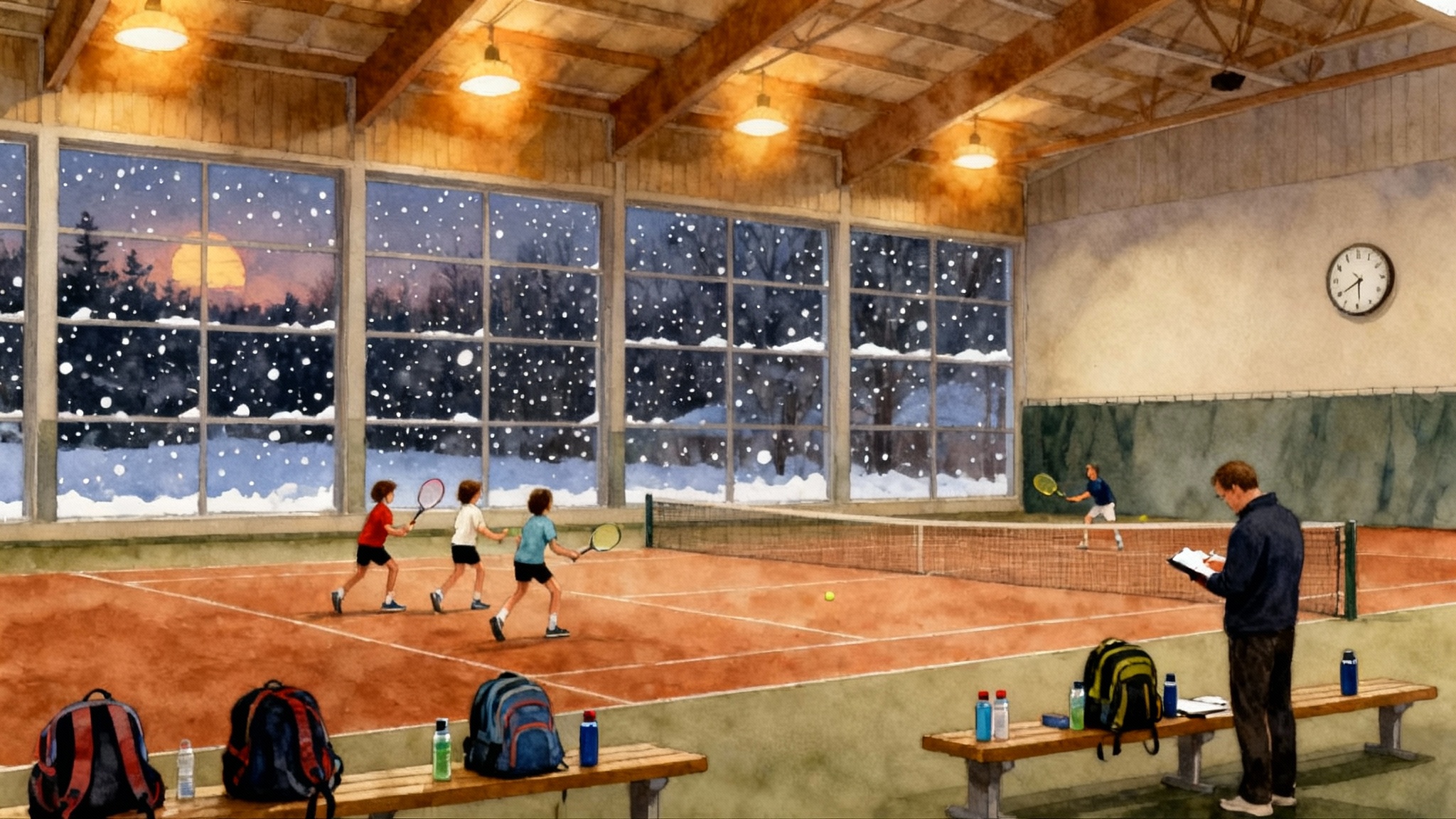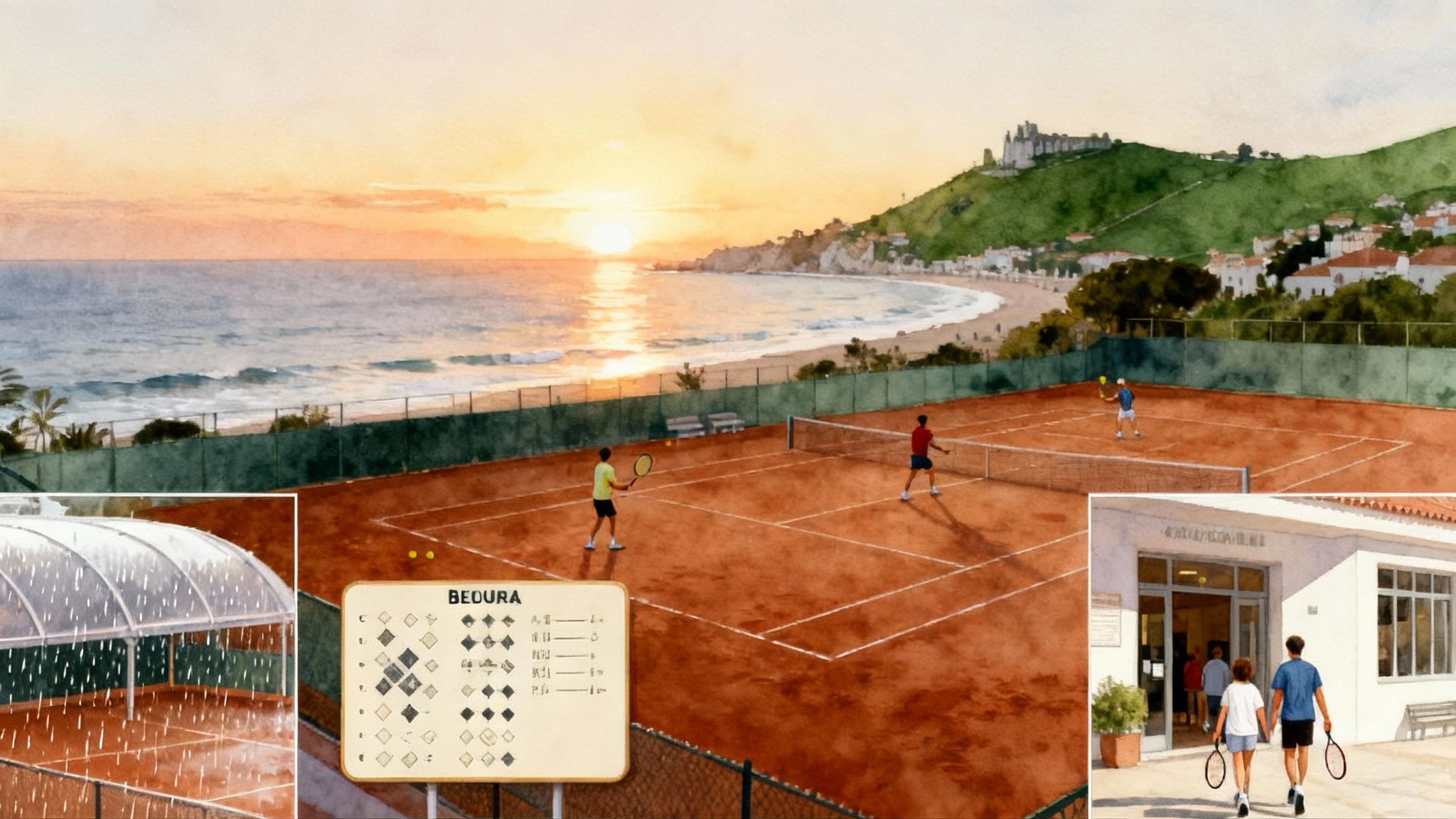Best Orlando and Lake Nona Tennis Academies 2025–2026 Guide
A commuter-first comparison of Orlando and Lake Nona tennis options. We break down USTA campus programs, independent day academies like Revolution in Maitland, and club or resort setups by training model, surfaces, school fit, commute, seasons, tournaments, and price bands.
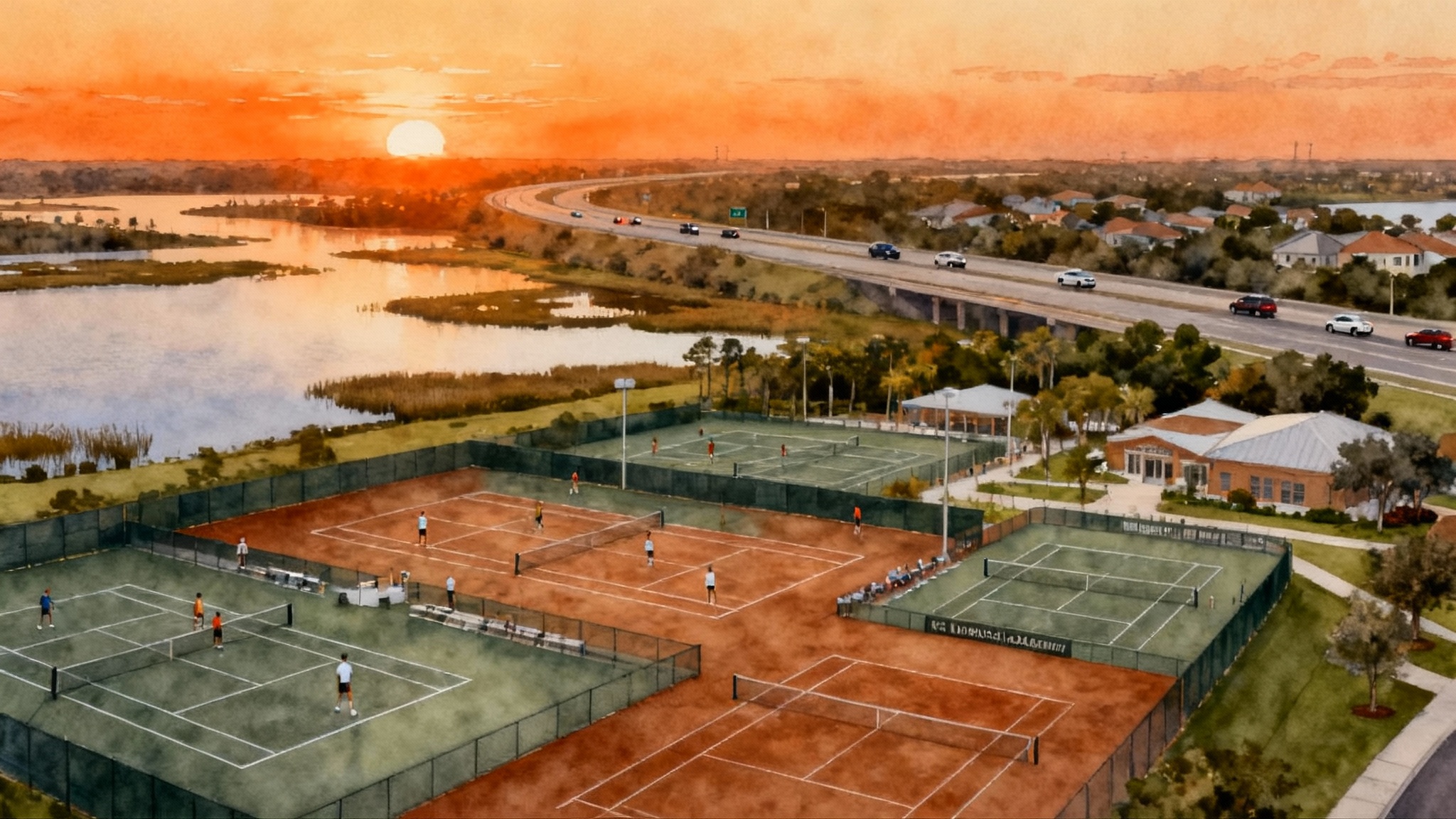
Why a commuter-first tennis guide matters
In Orlando, talent development often rises or falls on the family drive. With schools spread along Interstate 4 and State Roads 417, 408, and 528, the right academy is not only about coaches and courts. It is also about weekday traffic, school bell times, and access to tournaments without turning every Friday into a road trip. This guide compares three program types across Orlando and Lake Nona: United States Tennis Association campus options in Lake Nona, independent day academies such as Revolution Tennis Academy Maitland, and club or resort setups that blend instruction with membership perks. We focus on training models, surfaces, school integration, commute patterns, seasonal enrollment, tournament access, and realistic price bands. Then we finish with scenario picks for aspiring college recruits, intensive winter blocks, and adult returners.
The three program archetypes in Orlando
Think of Orlando tennis as a triangle, each point solving a different commuter problem.
- USTA campus based programs in Lake Nona: best for families in southeast Orlando who want broad programming, many surfaces, and tournament proximity. The campus is a large, purpose built center with pathways for red ball through adult performance. Start your research with the official USTA National Campus programs.
- Independent day academies in the north corridor: examples include Revolution Tennis Academy Maitland. These are hands-on, coach led environments where the head coach sets a clear technical and competitive identity. Commutes work well for Winter Park, Maitland, Altamonte Springs, and College Park households.
- Club or resort setups: private clubs and resort properties that offer junior pathways and adult clinics. They can be ideal for multi-sport families and adult players who want community, ladders, and clinics without a full-time academy feel.
Commute times and where they start to bite
Orlando driving is shaped by a few predictable rush windows and road choices. Assess programs by door-to-door time during the actual hours you would travel, not by miles on a map.
- Lake Nona to USTA campus: generally 5 to 15 minutes from most Lake Nona neighborhoods, a key advantage for daily after-school training.
- Downtown to Lake Nona via 408 and 417 or 528: often 25 to 45 minutes depending on time of day. Morning and late afternoon peaks add variability.
- Maitland and Winter Park to Lake Nona: often 35 to 55 minutes. This is manageable for weekend tournaments, but daily commuting for after-school sessions can strain schedules.
- Disney or Dr. Phillips to Lake Nona: usually 30 to 50 minutes. If school is west of Interstate 4, independent or club options closer to home may be more realistic for weekdays.
Commute rule of thumb: if your round trip exceeds 70 minutes on a typical weekday, build in a quiet homework block in the car or reconsider a closer training base for school days and use the larger centers for weekend camps or test days.
Training models that actually fit a school day
Every program describes itself as comprehensive. The useful differences are how they partition a school day and what happens between sessions.
- USTA campus model: a wide menu that includes after-school pods by age and level, morning adult clinics, and holiday or seasonal camps. The breadth lets mixed-level families train in parallel. Many sessions are modular, which helps students who must arrive late due to school or leave early for homework.
- Independent day academies: a more intimate design. Expect a morning fitness block for tournament players, a midday sparring and drilling block for home or online school athletes, then an after-school window for traditional school students. The coach to player ratio is a selling point, and the training theme is usually consistent across the week.
- Club or resort setups: programming aligns with member life. After-school junior development, performance pods two to four days a week, and strong weekend adult offerings. The upside is social support and court access; the tradeoff is fewer full-day training options.
Surfaces and why they matter in Florida
Surface choice shapes both your joints and your tournament calendar.
- Lake Nona and the campus environment provide a mix of hard courts and clay. Having both helps juniors build adaptable movement and point construction.
- Independent academies vary. North corridor facilities often default to hard courts, though some add Har-Tru clay for variability and lower-impact volume.
- Club or resort sites often lean clay for adult play and heat management. Juniors training mostly on clay should schedule periodic hard court tune-ups if college tennis is a goal.
If college tennis is your horizon, train year round on both surfaces. Treat surface bilingualism like a second language. Your body learns different recovery rhythms and footwork cues.
School integration: three workable templates
How a program fits school is more decisive than any drill menu.
- Traditional school student: prioritize after-school pods that start between 3:30 and 4:30 p.m., and cap at 6:30 or 7:00 to protect homework time. Independent academies that run a quality late window with structured point play will be your best friends.
- Home or online school athlete: look for two-session days. Morning fitness and patterns, midday drilling or match sets, then recovery or homework. This maximizes coaching contact without sacrificing academics.
- Hybrid student: some campuses and independent academies allow two to three mornings per week during off-peak school hours for private work, with after-school pods on other days.
Ask for a written weekly cadence. If a program cannot show the split by time of day, you risk guessing your way through the term.
Seasonal enrollment and how to stack the year
Orlando’s climate creates four useful blocks.
- August to November: school-year base building. Great for technical refinement before the holiday tournament crunch.
- December to February: peak tournament window with cool weather and lighter rain. This is the sweet spot for intensive blocks and match play ladders.
- March to May: spring class loads increase. It is a good time to protect energy with two high-quality sessions and one match day per week.
- June to July: summer blocks for volume, plus travel events. Balance heat with earlier starts and clay hours for joint friendliness.
Tournament access: make proximity do the work
Families centered in Lake Nona or southeast Orlando can reach a steady stream of Universal Tennis and USTA events without long drives most weekends. Use the USTA Florida tournament search to map the next eight weeks, then pin events within 45 minutes first. Build a habit of entering one event early and keeping a local backup if entries explode.
Independent academies in Maitland and Winter Park often travel as a group to events north or along Interstate 4. Group entries reduce logistics. Club programs may host in-house ladders that function like weekly match play; combine those with one sanctioned event per month for a predictable rhythm.
Price bands you can budget for
Program fees vary by facility, coach seniority, and session length. The bands below let you compare apples to apples without locking into a specific provider’s current rate sheet.
- Juniors after-school pods, two to four days per week: roughly 150 to 300 dollars per week depending on hours and ratio.
- Full-time junior day programs for home or online school athletes: roughly 1,500 to 3,000 dollars per month for four to five days per week, plus registration and fitness fees.
- Adult clinics in campus or club settings: commonly 25 to 45 dollars per session for 60 to 90 minutes, with small group intensives priced higher.
- Private lessons: often 80 to 160 dollars per hour depending on coach profile and court fees.
- Tournament entries: plan on 40 to 80 dollars per local event. Add travel and meals for out-of-area tournaments.
Always ask what is included: court fees, ball cost, video analysis, and fitness supervision. Two programs with the same headline price can differ by hundreds of dollars per month once add-ons are tallied.
Spotlight: USTA campus based options in Lake Nona
Who it fits: families in Lake Nona, Moss Park, and southeast Orlando who want minimal weekday commute, a mix of hard and clay training, and broad programming for siblings of different levels. The ability to find a clinic or sparring partner at almost any time of day is a strong reason to anchor here.
What to ask:
- How do after-school pods progress into competitive match play blocks during the December to February window?
- Are there structured ladders or verified match formats for Universal Tennis rating updates?
- How often do players switch surfaces during the week to build adaptability?
Commute reality: for Lake Nona residents the campus is the shortest daily drive in the city. For downtown or west side families, treat this as a weekend camp or tournament hub more than a daily after-school choice.
Spotlight: independent day academies in the north corridor
Example: Revolution Tennis Academy Maitland represents the independent model. The advantages of these programs are a tight coaching staff, consistent technical language, and the ability to tailor two-session days for home or online school athletes.
Who it fits: families in Maitland, Winter Park, Altamonte Springs, and College Park who want hands-on coaching and manageable weekday travel. Traditional school students can plug into late afternoon performance pods, while tournament players can book morning work during lighter traffic.
What to ask:
- How is the week scripted, from Monday patterns to Thursday or Friday match sets? Ask to see it in writing.
- On what surface will most drilling occur, and how often can athletes cross-train on clay?
- For aspiring college recruits, how does the staff track Universal Tennis rating progression and video packages for coaches?
Commute reality: this is the most efficient weekday solution for north side families. South or Lake Nona families should see it as a targeted camp block rather than a daily drive.
Spotlight: club and resort setups
Who it fits: multi-sport families, adult returners, and juniors who want strong instruction without the demands of a full academy schedule. The social calendar is a built-in motivator, and the clay heavy footprint keeps adult loading sensible in the Florida heat.
What to ask:
- Does the club run a weekly ladder or verified match night that counts toward ratings?
- How do junior players graduate from development clinics into performance pods?
- Are there guest fees or blackout dates that affect tournament warmups?
Commute reality: because clubs are sprinkled across neighborhoods, they often win on everyday convenience. Use them as a weekday base, then add weekend test days at the campus or an independent academy.
A commuter’s checklist for first conversations
- Drive the route at the exact time you would travel. Do it once on a Monday and once on a Thursday.
- Confirm start and end times, plus a written weekly plan. Look for built-in match play.
- Ask about surface mix and planned progressions between hard and clay.
- Audit the ratio. Six players to one coach is different from ten to one during point play.
- Request a sample month with tournaments penciled in within 45 minutes of home.
- Clarify all costs, including court fees, fitness, and make-up policies.
Scenario picks
Below are commuter-first picks. Take the structure and swap in the program closest to your home base.
Aspiring college recruit in a traditional school schedule
- Home base: pick the closest high-quality after-school performance pod. If you live in Lake Nona, the campus after-school pathway is the lowest commute cost and gives you diverse hitting partners. If you live in Maitland or Winter Park, an independent academy like Revolution Tennis Academy Maitland provides later afternoon pods with tighter coach oversight.
- Weekly build: three after-school performance sessions, one verified match night, and one weekend tournament or test day. Add a 60 minute private lesson every seven to ten days for targeted skill work.
- Surface plan: two days hard court, one day clay. Rotate weekly if your usual surface is heavy clay.
- Recruiting actions: maintain a simple highlight library, two to three minutes per month, and a rating tracker that shows progress. Ask your coach which events draw college coaches during winter.
Intensive winter block, December to February
- Home base: Lake Nona and southeast families should use the campus for volume and variety in cool weather. North side families can run a two week block at an independent academy while schools are on break.
- Weekly build: five days of training with two double sessions. One day for match sets, one day for recovery and video.
- Tournament strategy: enter local sanctioned events first. Keep a backup entry at a second site within 45 minutes to protect volume.
- Academics: pre-load schoolwork before the block, then use early mornings for reading and assignments to keep evenings clear for sleep.
Adult returner who wants to get truly match ready
- Home base: choose a club or the campus program that offers a progressive adult ladder. Start with a three week clinic series, then layer in one weekly match night.
- Weekly build: two clinics for movement and patterns, one match night, and one private lesson per month to reset technique.
- Surface plan: mostly clay to manage load, with one hard session every ten days for timing and serves.
- Community: join one league team or mixed ladder to keep momentum after week six.
Hard choices, simple math
When two programs feel equal, choose the one that saves you twenty minutes per day. Here is why. Twenty minutes saved four days per week is eighty minutes. Eighty minutes becomes three hundred twenty minutes per month. Three hundred twenty minutes is more sleep, homework without stress, or one extra verified match set. Over a school year, a commute advantage compounds into calmer decision making and better tennis.
Related regional guides
- Compare coastal options with the Tampa–Sarasota–Naples academies guide.
- For South Florida planning, see the Miami–Fort Lauderdale academies.
How to audition a program in one week
- Day 1: observe a session without joining. Watch coach traffic management and between-point feedback.
- Day 2: book a private lesson to test the coach’s diagnostic clarity. You want a simple, written priority list.
- Day 3 or 4: join a group session. Notice the ratio and whether you spend more than 10 minutes standing.
- Day 5: play a match set against a similar player in the program. Confirm there is a pathway to weekly match play.
- End of week: ask for a monthly plan that includes session types, surface mix, and target tournaments.
Putting it all together
- If you live in Lake Nona or nearby, a campus based plan is the most time efficient weekday choice, with weekend options for ladder and tournaments.
- If you live in Maitland, Winter Park, or Altamonte Springs, an independent day academy will save you hours each week and give you consistent coaching language.
- If you prize community or you are returning to tennis as an adult, a club or resort program delivers the right blend of instruction and social play with zero long commutes.
The best plan is the one you can execute on a school night. When your training, school, and commute all pull in the same direction, the city’s tennis network becomes an advantage, not an obstacle. Start with a map, pick the archetype that fits, and script your next eight weeks with conviction. Orlando rewards players who plan their drives as carefully as their down the line backhands.
